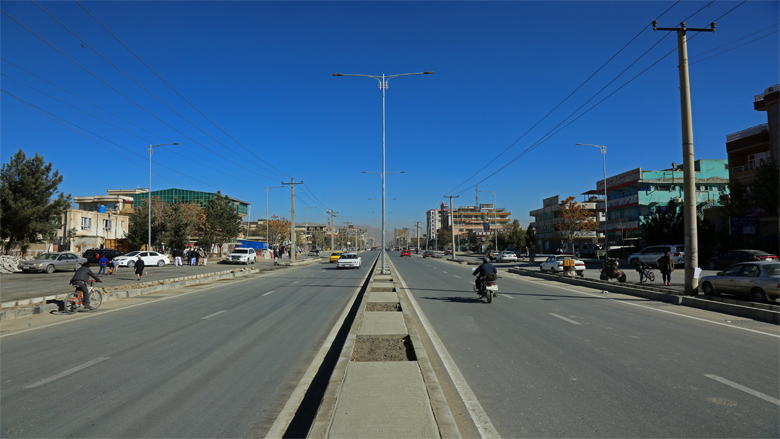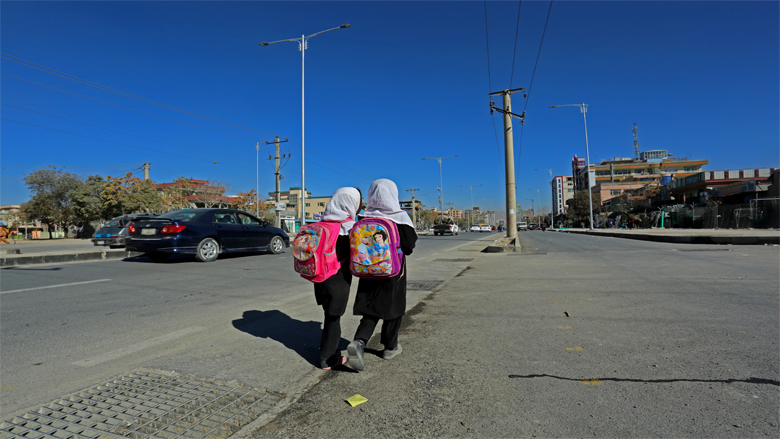KABUL CITY – The zebra markings on the road allow schoolchildren to safely cross the road, weighed down by heavy schoolbags. The paved sidewalk is filled with teenagers, older siblings and their friends who are heading to school too. Despite the slight nip in the air, everyone seems to be in a good mood driven by the promise of a new day.
Ahmad, 35, a taxi driver, comes to a stop alongside the road to check his car’s tires. He ferries passengers every day on this newly reconstructed asphalt road. “The road is not too crowded anymore and I can reach my destinations faster,” he says. “Before being asphalted, the road was bumpy. There wasn’t a good system of managing traffic.”
Until recently, commuters in Kabul city faced hazardous traveling conditions, especially during winter and on rainy days. Sidewalks and roads were muddy and, with was no drainage system, water from rain and melted snow led to pedestrians slipping and vehicles skidding.
Thousands of commuters and residents now benefit from the newly asphalted road, carried out by Kabul Municipality (KM). Reconstructed under the Kabul Urban Transport Efficiency Improvement (KUTEI) Project, this road connects Parwan-e-II square and Sarak-e-5 Square. As one of the main roads of Kabul city, it has eased access of nearby municipality districts to other parts of the capital city.
The construction on the 5.75-kilometer arterial road started on July 2015 and was completed in October 2016. In parallel, KUTEI also rebuilt sidewalks and drainage on both sides of the road and installed street lights to ensure well-lit roads at night.
With funding support from the Afghanistan Reconstruction Trust Fund (ARTF), KUTEI targets improvement of transport services through a package of interrelated interventions to build Kabul Municipality’s capacity. To date, the project has completed the rehabilitation of six main roads in Kabul city.


